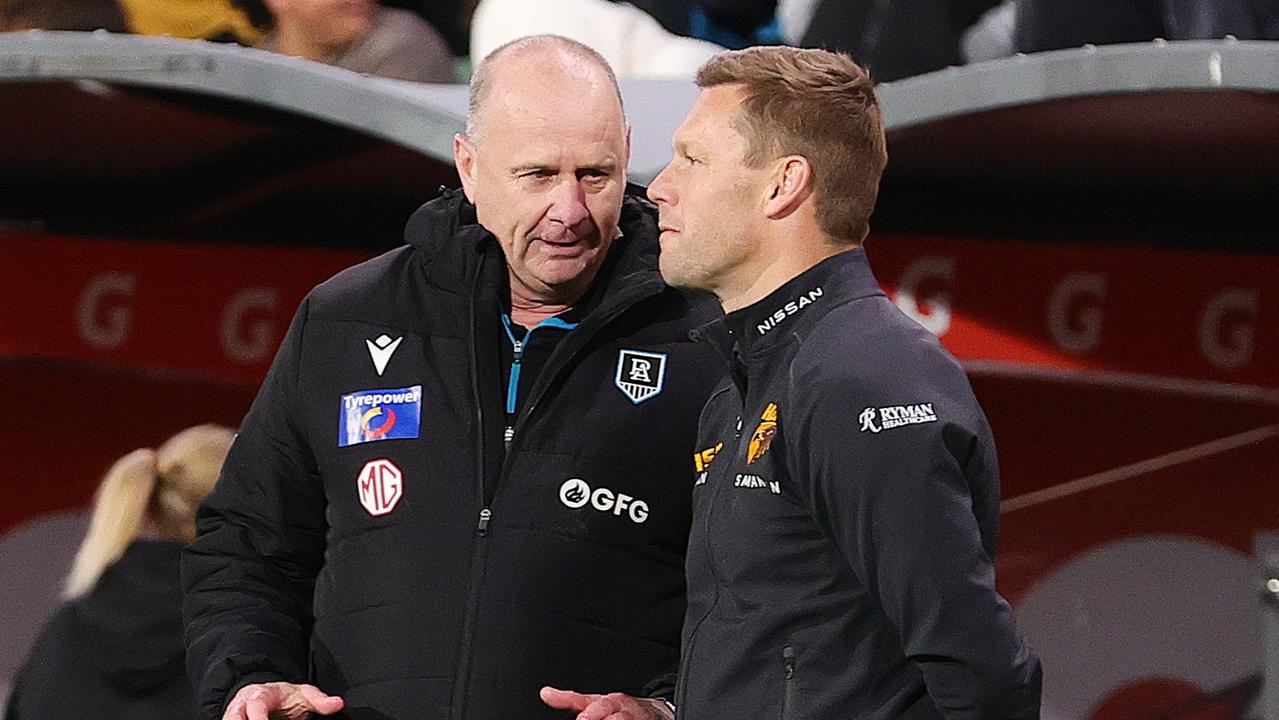The heavy hitters of Australian sport have broken down the key issues facing the sporting nation
The powerbrokers of some of Australia’s biggest sporting codes believe now is the time to build on the momentum of women’s sports in Australia, particularly with the upcoming World Cup.
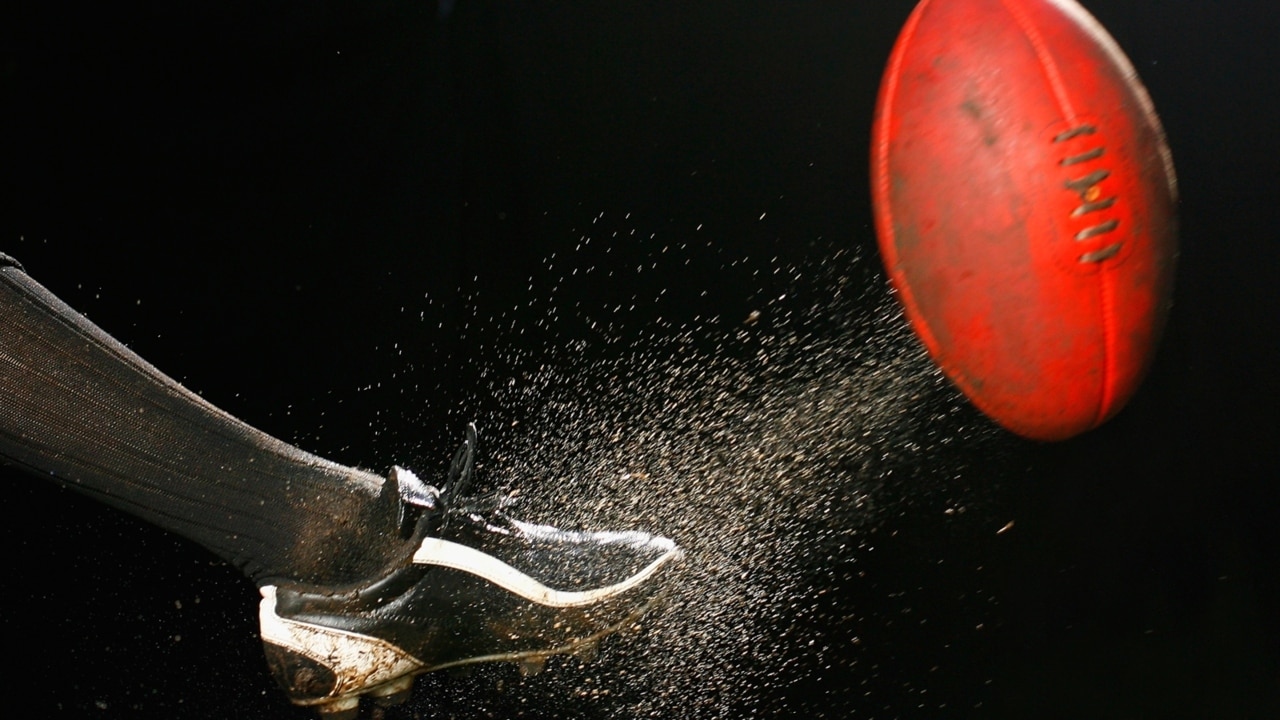
Sport
Don't miss out on the headlines from Sport. Followed categories will be added to My News.
Top Australian sports leaders have identified a need to work more closely together in a bid to rally greater participation and sharing of resources in the face of a sporting landscape that is more competitive than ever.
Ahead of this month’s SportNXT conference — which will be staged in Melbourne from March 28-30 – News Corp surveyed five of the country’s leading sports administrators on the challenges facing their own sports and that of the wider industry.
Participation, investment in women’s sport, and jostling for eyeballs were highlighted as key issues facing AFL, netball, Formula 1, tennis and cricket.
And a more collaborative approach between sports could be a way forward.
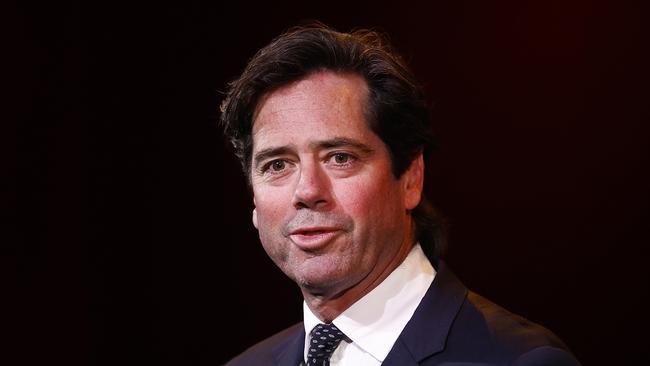
“There is more competition than ever before for people’s time and it is an increasingly competitive environment where sports are competing with other forms of entertainment for the attention and time that people have,” AFL chief executive Gillon McLachlan said.
“Kids and parents have more choices and parents are time poor and we must ensure our game is compelling, welcoming, inclusive and has something for everyone, whether you are in Tarneit or Hawthorn.”
Tennis Australia chief and Australian Open tournament director Craig Tiley said “cross-promotion and sharing of resources” would be pivotal in coming years.
“We’re in this fight against the declining participation together,” he said.
“We need to make sure we are working together, sharing knowledge and resources so that we all come out of this ahead.
“Covid played a massive role in twisting our thinking on this. No longer can we fight the other sports like cricket and AFL for eyeballs, sponsorship and government funding.
“We need to be thinking about multi-sport venues and training facilities to combat the limited space especially in urban areas.
“The latest macro-economic challenges will also force us to do this even faster than previously anticipated.”
Local and international sports leaders are set to speak at SportNXT, held at Melbourne Park, including NFL commissioner Roger Goodell, PGA Tour commissioner Jay Monahan and Formula 1 president and chief executive Stefan Domenicali.
WHAT IS THE BIGGEST ISSUE CURRENTLY FACING AUSTRALIAN SPORT?
Gillon McLachlan (CEO, AFL): There is more competition than ever before for people’s time and it is an increasingly competitive environment where sports are competing with other forms of entertainment for the attention and time that people have. Kids and parents have more choices and parents are time poor and we must ensure our game is compelling, welcoming, inclusive and has something for everyone, whether you are in Tarneit or Hawthorn. The other challenge is the changing face of Australia and we need to have a different geographic and demographic approach so that everyone, no matter where they are what their background is can feel welcome in our game.

Kelly Ryan (CEO, Netball Australia): Very live in our world is the fact women’s sport is still incredibly under invested in. That’s the biggest challenge in sport, and has been for the last 96 years of our existence as a sport. It’s not new to us, but the increasing attention on women’s sport is highlighting the significant disparity in investment in men’s and women’s sport.
Andrew Westacott (CEO, Australian Grand Prix): Infrastructure at a grassroots level needs to expand and improve to allow for increased participation in entry-level sport. This is across suburban and regional/rural areas, and it includes everything from karting and motorsport facilities to our more traditional Australian sporting pursuits. With a growing population, it will be increasingly challenging to balance the expanded housing needs in Australia with the need for larger facilities in more areas.
Craig Tiley (CEO, Tennis Australia): Sports and parents are facing the same major battle – getting kids off the couch and away from the screen. Sport is such a huge part of our culture and national identity but the number of Aussie kids playing sport has been in decline for decades. Less than one third of all Aussie kids get the daily exercise they need to develop vital gross motor skills and the behaviours required to lead healthy adult lives. Collectively we all need to do a better job to find ways to get more kids to start playing and make sure they keep playing all the way through to adulthood.

Nick Hockley (CEO, Cricket Australia): Ensuring participation in sport remains a priority for kids, families and schools in the face of increasing time, financial and academic pressures is a major challenge for all sports. We have a responsibility to encourage kids to not only watch and attend sporting events which is why we’ve set the ambitious goal of doubling the number of 5 to 12 year-olds who play cricket over the next five years.
WHAT MECHANISMS CAN BE UTILISED TO HELP COMBAT IT?
GM: We must ensure our game is compelling, welcoming, inclusive and has something for everyone. Ensuring our products are appealing, from NAB AFL Auskick as an affordable and fun entry-level sporting option for boys and girls right through to an elite game that is the best entertainment offering available. Alternative formats, like JuniorX and AFL 9s, are becoming increasingly popular and suit kids and adults from a variety of backgrounds, who may not necessarily want to play the game the traditional way.
KR: A lot of people (in) corporate sponsorship have a very fixed and prehistoric view on how they value sponsorship and partnerships. Their metric is one size fits all, that’s just not right. We’re trying to change the narrative to show it’s not all about reach, mass eyeballs. Men’s sport does deliver that, but women’s sports offer a much deeper connection, an emotional connection and higher engagement than other sports can. It’s going to take us a while, but we are reorienting the perceptions about how you assess and value women’s sport as a viable entity.
AW: Combating these challenges will require forward planning and alternative funding models, as well as collaboration between government and sporting
organisations. State and federal governments need to identify the social and health benefits associated with increased sporting participation in order to justify much-needed additional expenditure in these areas.
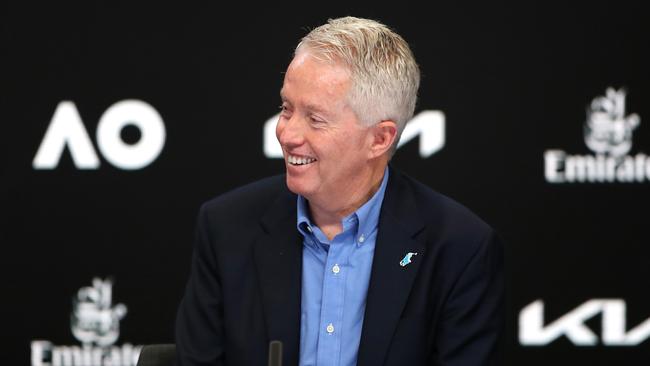
CT: The short answer is we need to adapt the product and the way we deliver sport to suit today’s kid and their parents. I’m not talking about ripping up the fundamentals of how you serve, hit a forehand or backhand. But the way we teach sport needs to change to account for the general lack of skills we are seeing. The experts say today’s kid would finish about 250m behind in the 1.6km run and that their basic skills like throwing, catching, forward rolls are about 10-15 per cent lower than their parents in the 80s. We know a kid isn’t going to do something that they think they’re not good at or isn’t cool. We have to find ways to start them playing regardless of their skill level, get them hooked and keep them playing because they love it, their friends love it and it is fun.
NH: The implementation of new more inclusive and fun formats for junior cricket as well as Woolworths Cricket Blast has made the game more immersive and our retention rates in junior cricket have increased as a result. We regularly reach out to participants and families to understand and respond to their changing needs — whether that’s more flexible timeslots, improved school programs or making sure the experiences of both kids, parents and volunteers at Woolworths Cricket Blast centres is fun and creates a lifelong connection to the game.
WHAT IS THE BIGGEST CHALLENGE YOUR SPORT FACES WITHIN THE NEXT FIVE YEARS?
GM: The greatest challenge for the AFL is in ensuring people are engaged in our game despite the various social shifts. There’s always going to be issues of the day, but the biggest thing in a broader landscape is what’s happening in our community and the demographic shifts, shorter attention spans, the digital generation, I think those things are big things that we’re wrestling with and will continue to wrestle with.
KR: We’ve got competition. We’ve previously operated in a safe space, netball has been one of the very few sports to legitimately accept and embrace female participation and elite competition. So it’s a new challenge. We’re going to relish that challenge. Not being the sole voice in the conversation is an opportunity as much as it is a challenge, it helps raise the profile and narrative of our sport. Diversity in the way people are consuming and participating in sport (is another challenge). There’s a lot more choice in the channels people are engaging with. Being in the right channels, the right products, identifying gaps and opportunities to grow your audiences (is crucial). Your programming, product, the way you market it, and the channels you put your content out on need to be right. There’s a lot more to consider now in sport – it’s really equal parts sport, content and entertainment.

AW: F1 and MotoGP have robust sustainability programs in place, and given both sports are inherently contributors to the carbon footprint, these programs must be delivered on in order to reduce the impact of the sports. Continued improvement in safety systems associated with motorsport is also of paramount importance.
CT: Where do I start? We have a big ambition to be the number one played sport in Australia by 2030. To do this we need to bring together three major initiatives. We have to make get more kids to start playing tennis by making it as easy as possible for parents, focusing on schools and helping to develop engaging first coaches. We have to keep kids and teens playing tennis by promoting more social and team-based competitions on top of what we currently offer. We need to maintain the level of adult participation that we experienced during the pandemic with the return of so many lapsed players due to the natural physical distancing that tennis provides to grow our offering by including complementary formats like padel, pop and pickleball. We’ll be able to do this if we get the tech right by fixing the basics and making it as easy as possible to book tennis from your phone. It seems basic but that is probably our biggest challenge. Getting the thousands of coaches, clubs and tournaments around Australia online.
NH: The volume of professional cricket being played across the world creates challenges but also significant opportunities. The huge demand for our top female and male players is an indication of the global popularity of the game and is providing ever increasing earning opportunities for players, as we are seeing with the Women’s Premier League. However, the workloads and wellbeing of players needs to be managed given the volume of international and domestic cricket across three formats.
WHAT IS ONE THING ANOTHER AUSTRALIAN SPORT IS DOING THAT YOU PARTICULARLY ADMIRE?
GM: I think all sports do an important job of engaging kids in physical activity and particularly in team sports where people learn to work together for a common goal.

KR: The way the NBL is recrafting its sport and the rise of the NBL has been fantastic to watch. It’s added another dimension to the traditional sporting landscape, and shows there’s great opportunity for products that can deliver something the market wants. There’s enough for everybody – it’s not taking away from other sports.
AW: I love what many sports are doing in the area of fan engagement — it’s not just about the on-field or on-track action. Sports and their networks are growing the entertainment packages for their events to enhance the fan experience, something that we all must do. We must learn off each other.
CT: My daughter plays basketball (thank goodness the twins play tennis!). They’ve done a great job promoting basketball as a sport for all genders and the less traditional — cooler option. They’ve capitalised on the global standing of the NBA and all of the video games and pop culture references that go with it to attract young kids into the sport.
NH: I’ve been impressed by the NBL’s partnership with the NBA. It’s a great example of a sport looking beyond these shores and engaging with its biggest market rather than being overwhelmed by it. The fact Australians are over-represented in the NBA and WNBL shows the opportunities being created for the players through this partnership and some of the commercial opportunities such as Australian NBL team jerseys being included in the NBA 2K23 computer game. Australians appearing in the IPL and now the Women’s Premier League presents some similar opportunities, as does our new broadcast partnership with Disney Star to grow the WBBL and BBL in India.
WHAT CAN AUSTRALIAN SPORTS DO MORE OF TO ATTRACT TOP FEMALE TALENT AND ENGAGE MORE WOMEN TO BECOME INVOLVED?
GM: Women and girls need to be inspired by seeing the opportunity to not only compete at the elite level but also be involved in all areas of footy, on and off the field. Now with all 18 clubs represented in the NAB AFLW competition featuring 540 players, girls around the country can see what they can be. Female participation has surged since the inception of AFLW in 2017, and our work is far from done.

We need to build or develop an oval a week every week for five years to keep up with growth in our game, with a major factor behind this being the growth in female football. We are striving to build more infrastructure that features female-friendly facilities that are welcoming, safe and places of pride for local communities. It is not only ensuring women and girls engage in our game but at every level we have both the facilities and the environment that supports them whether they are players, coaches, umpires or administrators. At an elite level we have programs in place to accelerate the number of women either coaching or working in football departments.
KR: Critically important in our space is to continue to have international dominance. We are fortunate to be a sport you can play for your country – that’s a huge competitive advantage we have with the Commonwealth Games and the Netball World Cup. Playing for your country, being really strong on the international landscape is a huge tool to encourage participation across all levels. It gives us the opportunity to attract the best talent that exists in the market – to be able to play for your country, win a gold medal, do those things highly competitive people want to do.
AW: Attracting more funding and sponsorship for women’s teams and athletes will allow women more opportunities and have immense flow-on effects – many athletes currently have to balance their sport as well as full or part-time work. Specific to motorsport, work to grow the participation for females has been commenced at the elite level with programs such as the F1 Academy. The continued development of domestic grassroots programs nationally
via Karting Australia, Motorsport Australia and Motorcycling Australia is great to see and
must be accelerated.
CT: Equal prize money and compensation, equal opportunity and equal exposure. That needs to be the aim of all Aussie sports and until that happens perhaps there needs to be more
investment into the women’s game than the men’s. We need to be committed to driving accountability of our leaders to ensure equitable investment, publicly report progress and engage the community to embrace change. We need to use our influence to create an equal voice by strengthening career and volunteer pathways and opportunities, creating sustainable networks, inspiring and developing talent and advancing governance structures.
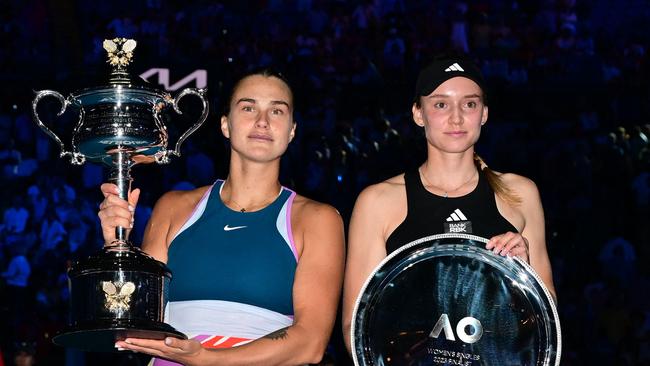
Finally, we must enrich playing experiences by ensuring safe, inclusive and welcoming environments, applying a gender lens across all stages and empowering women and girls to excel and thrive on the world stage. We pride ourselves on being at the forefront when it comes to implementing positive change in professional sport and our vision is for there to be no limits for women and girls on and off the court.
NH: We’re incredibly proud of leading role we have played in investing and prioritising cricket as a sport for women and girls. This has not only produced one of the most successful Australian sporting teams in history, but also led to an explosion in the number of girls playing cricket. We have put in place a strong, well-planned and well-funded women and girls’ program from the grassroots right through to the elite level. The commercial benefits for cricket, and for the players, have followed with increased media coverage, sponsorship and the growth in player salaries.
WHAT IS AUSTRALIAN SPORT’S GREATEST OPPORTUNITY IN THE NEXT FIVE TO 10 YEARS?
GM: Football has made incredible progress in developing the game for women and girls at all levels, but our work never stops. We want a football in every home around Australia, we want footballs in every school around Australia, we want an equal number of boys and girls, men and women playing our game and we know we need an oval a week, every week to cater for that growth. Additionally we want to bring girls to our game – as players, umpires, coaches, administrators, striving for equal participation and representation by the end of this decade.

KR: Sport is never going to be as relevant as it’s going to be across the next 10 years. World Cups (and other major events) on home soil add huge gravitas. Our World Cup is in 2027, you’ve got the Commonwealth Games in 2026, other sports have World Cups here, and all this leads up to the Olympics in 2032. Sport is going to be a constant in daily life and the daily narrative. Some of the best sporting content in the world will be happening across our nation in the next 10 years. We’re going to be hugely relevant. It doesn’t matter what sport is (in the spotlight at one time), everyone will be a beneficiary.
AW: Capitalising on the success of the Matildas at the forthcoming FIFA Women’s World Cup, as well as the opportunities that will be created in Australia by hosting the Brisbane Olympics in 2032. We should never forget the aspiration and the legacy of benefits that are created by hosting the world’s biggest and best sporting events in Australia.

CT: Cross-promotion and sharing of resources. We’re in this fight against the declining
participation together. We need to make sure we are working together, sharing knowledge
and resources so that we all come out of this ahead. Covid played a massive role in twisting
our thinking on this. No longer can we fight the other sports like cricket and AFL for eyeballs, sponsorship and government funding. We need to be thinking about multi-sport venues and training facilities to combat the limited space especially in urban areas. The latest macro-economic challenges will also force us to do this even faster than previously anticipated.
NH: There is a real opportunity to help foster greater social cohesion and inclusivity. If we had said ten years ago that we would sell out the MCG for the ICC Women’s T20 World Cup final in 2020 or for an ICC Men’s T20 World Cup game between India and Pakistan this season, no one would have believed us. The Australian population is changing and the number of people from South-Asian backgrounds in particular playing in community clubs and elite pathways is increasing rapidly. We know that cricket, as with all sports, brings people together across the community and we’re constantly looking at ways to maximise this.
SportNXT — which kicks off on March 28 — is an innovative three-day sports thought leadership summit hosted annually in Melbourne that gathers global leaders from all sectors of the sports industry to create, share and connect. Tickets are available at sportnxt.org
Originally published as The heavy hitters of Australian sport have broken down the key issues facing the sporting nation




